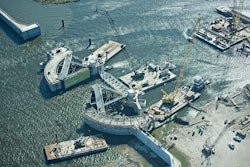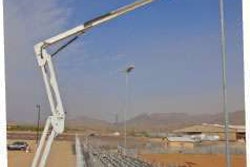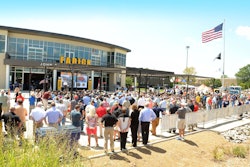Contractor strategies staying the course

“We really haven’t changed our strategy,” says Bradford Clubb, president of Flyway Excavating, Lititz, Pennsylvania, with $6.5 million in annual revenues. “Despite things getting ugly, we’ve kept replacing machines, almost more aggressively than before the downturn.”
Clubb likes the warranties that come with new machines. “In the first five to seven years you don’t have high maintenance costs and you know what your costs are going to be,” he says.
“ It makes more economic sense to just bite the bullet.”
Clubb’s experience is echoed by other contractors, both medium and large. Mike Kemper, president and CEO of NPL, a national pipeline construction firm out of Phoenix, Arizona, says his firm’s strategy is always to get the best cost and value in order to pass it on to its customers – be it renting or buying. “We’ve had this same equipment acquisition strategy for years and see it continuing into the future,” he says.
Ralph Lo Priore, director of fleet assets and processes for the 1,300-machine fleet of Gary Merlino Construction, Spokane, Washington, is taking a sharper look at rebuilds, especially in light of Tier 4 regulations. “If it’s a Tier 3 machine, I’ll rebuild it,” he says, but lower tiered machines might not be automatic rebuilds. “We need to be into the latest technology, and that includes Tier 4 products.”
Lo Priore says he’s also getting rid of machines with low utilization. When things were booming, it made sense to keep second-grade machinery around as backup players. No longer. “It’s really costing you money even it’s just sitting there,” he says.
Phyllis Adams, owner/manager of Phylway Construction, Thibodaux, Louisiana, with more than $50 million in annual revenues, also has been buying – a strategy that may come to abrupt halt this year. “We’ve been blessed to stay busy with the post-Katrina levee building, and we bought a number of machines in 2011, particularly to take advantage of the bonus depreciation,” she says. Those acquisitions included five dozers, three excavators and two scrapers, bought through a combination of outright buys and rental purchase options. The firm, however, is on a wait-and-see hold this year. “We have very little backlog and we’re not optimistic for 2012,” she says.
Because Clubb’s mix of work has changed – it’s now 90 percent publically funded site development and stream restoration work versus 90 percent private work before – his fleet mix has changed.
For example, Flyway traditionally has had five backhoes. It’s now down to three backhoes; he replaced two with compact excavators, a machine his company previously rented.
“If you don’t keep your equipment up to date, sooner or later you’re going to need catch up and it could be painful,” Clubb says. “It makes more economic sense to just bite the bullet.” EW












